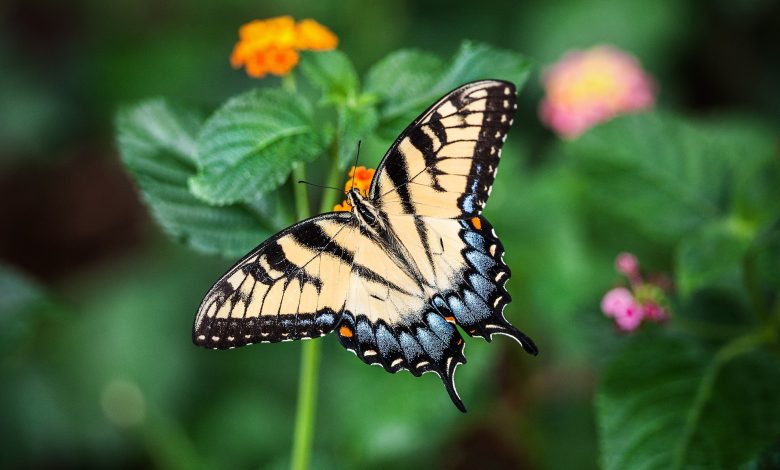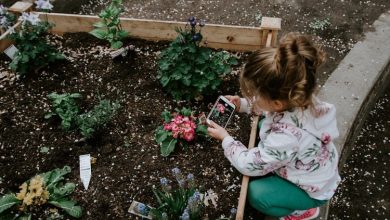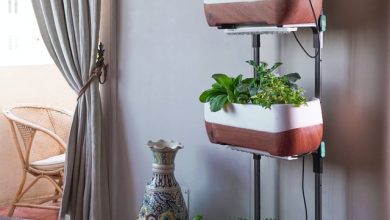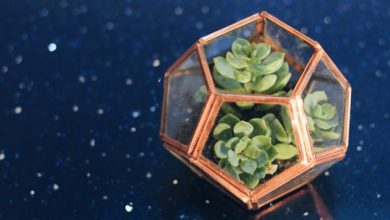How to Make a Butterfly Garden

Butterflies are some of the most interesting and beautiful creatures on the planet. Who wouldn’t want to give them a proper home? Whether you are an advocate for growing butterflies or simply like the way they look, this article will be your complete guide on how to make a butterfly garden. We will go over plants and trees that not only attract butterflies and other pollinators, but can also work together cohesively to provide blooms throughout the spring and summer.
Step One – Find the Right Site
You want to pick a site that gets sun but is shielded from the wind. A spot that has a few smaller trees or shrubs is ideal, as they will give the butterflies a place to roost at night and to cool off on a hot day. You also likely want to pick a spot that’s close to a patio or near where you normally gather.
Step Two – Create Shelter
Butterflies love to bask in the sun, especially on cool mornings. Try to find a large flat stone or two and position them in your garden to give the butterflies a landing zone. Consider buying a couple of small trees or shrubs and creating a brand-new space if you don’t have one already picked out.
Trees That Attract Butterflies
Here are five trees that will attract your eye and butterflies alike:
Black Willow
Salix nigra
The black willow can grow as low as ten feet tall and can provide some fun interest to your garden. Butterflies enjoy the black willow for its nectar. The black willow is also known as the swamp willow and will perform well if you have an area that sometimes gets standing water from too much rain. Butterflies are attracted to muddy pools of water, so this could be the perfect use of part of your yard that is normally an annoyance.
Chokecherry
Prunus virginiana
Chokecherry trees feature lovely clusters of white flowers at the ends of their branches. Each individual petal can be seen on the flowers, which can grow over four inches in diameter. Butterflies cannot resist these beautiful buds, and you’ll likely think they are spectacular as well. As a bonus, you can use the fruits from a chokecherry tree when cooking preserves.
Eastern Redbud
Cersis canadensis
The eastern redbud is an ideal addition to any garden, but it’s especially beneficial in a butterfly garden because of how early it blooms. The eastern redbud will start popping out beautiful pink blooms even before its leaves come out. As one of the first plants to bloom in the spring each year, the eastern redbud lets butterflies know right from the beginning that your garden is a nice place to visit.
Flowering Dogwood
Cornus florida
The flowering dogwood is an ideal choice if you want a tree that can grow a little taller, while also maintaining striking good looks. The blossoms of its flowers are long-lasting and can be pink, white, or red. The flowering dogwood maintains its appeal in the fall as well, when its leaves turn scarlet red and are adorned with red fruits.
Wild Cherry
Prunus avium
Wild cherry trees are an instant attraction with the wildlife around your yard. Whether it’s the delicately tapered leaves, curling bunches of blossoms, or shiny bark, the wild cherry tree is a beautiful addition to any garden. It’s also fragrant and looks wonderful in the fall. Butterflies flock to its cherry nectar, and the wild cherry fruits are edible for you to cook—if any are left.
Step Three – Provide Food and Water
Adding a birdbath to your garden is always a popular choice with the birds and butterflies. Even bees need water, and the more pollinators you can attract, the better.
You can also consider adding feeders. Typically, if you want to attract butterflies, you would also like to attract mesmerizing hummingbirds as well.
Step Four – Plant Nectar-Rich Flowers
Of course, it is the flowers that do the heavy lifting when it comes to attracting butterflies. Everything that came before this is necessary to provide butterflies with the friendliest environment, but the real reason butterflies will favor your garden is based on the flowers you pick.

Step Five – Do not Forget About Caterpillars
If you truly want to create a butterfly haven, you will have to have plants that support the caterpillar stage of its life. Milkweed plants are the ideal choice for supporting caterpillars, especially monarch butterflies, but some flowering plants can support them as well. One of these that we will go over below is hollyhock.
11 Plants That Attract Butterflies
Alyssum
Lobularia maritima
As a low-growing flower, alyssum is perfect for filling empty spaces with its quick-spreading ground cover. When it blooms in April, your garden will be graced with small white flowers that provide the perfect accent no matter what the rest of your garden looks like. Alyssum will bloom from April to June and is helpful for attracting butterflies early in the season. Its blooms are both fragrant and showy, making them hard for butterflies to resist.
Aster
Symphyotrichum
Similar to alyssum but with much more color is the aster, a fellow herbaceous perennial. Aster will grow slightly higher off the ground, reaching a foot to a foot and a half with a similar-sized spread. The flowers feature thin purple petals surrounding a golden yellow center. Aster is easily grown and requires minimal maintenance, making it ideal for those that want a splash of color added to their butterfly garden.

Butterfly Bush
Buddleia davidii
When a plant is named for its ability to attract butterflies, what else needs to be said? Let’s start with the butterfly bush’s striking good looks, as long strands filled to the brim with small purple flowers casually grow outwards. The flowers bloom in spring and summer, making it smart to pair with aster or alyssum. You will want to give a butterfly bush plenty of room to spread out. Butterfly bushes can grow between six to 12 feet tall and four to 15 feet wide.
Buttonbush
Cephalanthus occidentalis
A buttonbush plant is a near must-have for most butterfly gardens if you have the need for a larger shrub. The large spherical flowers are an ideal resting place for butterflies, and the many small pistils that protrude will attract other pollinators as well. Typically, they will grow between six and 12 feet tall, so the buttonbush will need some room to spread out.
Calendula
Calendula officinalis
Better known as marigold, calendula is a genus that contains 20 different varieties of annuals and herbaceous perennials. The marigold blooms are densely packed with supple petals in shades of orange and bright yellow. A longtime staple of cottage gardens in the English countryside, the marigold is an iconic flower that happens to be a butterfly magnet.
Cosmos
Cosmos
Cosmos have similar flowers to the flowers we’ve covered so far, but their petals are a little wider, and the flower is a little larger overall. The flowers can come in many different shades of red, purple, and pink, as well as white. Cosmos are easy to grow and are perfect for cutting off and featuring in a vase.
Daylily
Hemerocallis
One of the larger flowers on this list is the daylily. While not actually a lily, daylily plants produce stunning flowers with large petals that closely resemble lilies. Daylilies are commonly available in red, yellow, and orange.
Dense Blazing Star
Liatris spicata
The dense blazing star produces long spikes of purple blossoms stacked upon one another at the top. At the bottom is a collection of small grass-like leaves growing neatly in order down to the ground. The dense blazing star will grow up to four feet tall and is irresistible to butterflies and bees alike.

Hollyhock
Alcea
We’ve mentioned some early and middle blooming plants, but make sure to also buy late-blooming plants to always have a steady flow of flowers. Hollyhock is one of those late bloomers, with eye-catching flowers appearing in mid-summer. You will want to plant hollyhock in the back of your garden, as it will grow six to eight feet tall.
One of the most important aspects of having hollyhock in your garden is that it supports the caterpillar stage of a butterfly’s life.
Russian Sage
Perovskia atriplicifolia
Russian sage is a fragrant and colorful variety of sage that has many benefits for your garden. This is another late-blooming plant, so make sure to pair it up with some of the mid and early bloomers. Russian sage features many different green stems with small delicate leaves growing from one main root. When it blooms, striking purple and pink flowers grow upwards from the middle and provide a colorful haze that attracts butterflies in bunches.
Scarlet Bee Balm
Monardo didyma
Also known as wild bergamot and bee balm, the scarlet variety adds vibrant red colors to your garden. Scarlet bee balm is a perennial herb that is a member of the mint family. It will grow from two to three and a half feet tall with three to six-inch leaves. The fragrant foliage will attract flowers just as well as its blazing red color. Blossoms begin to bloom in late June and last until late August.



